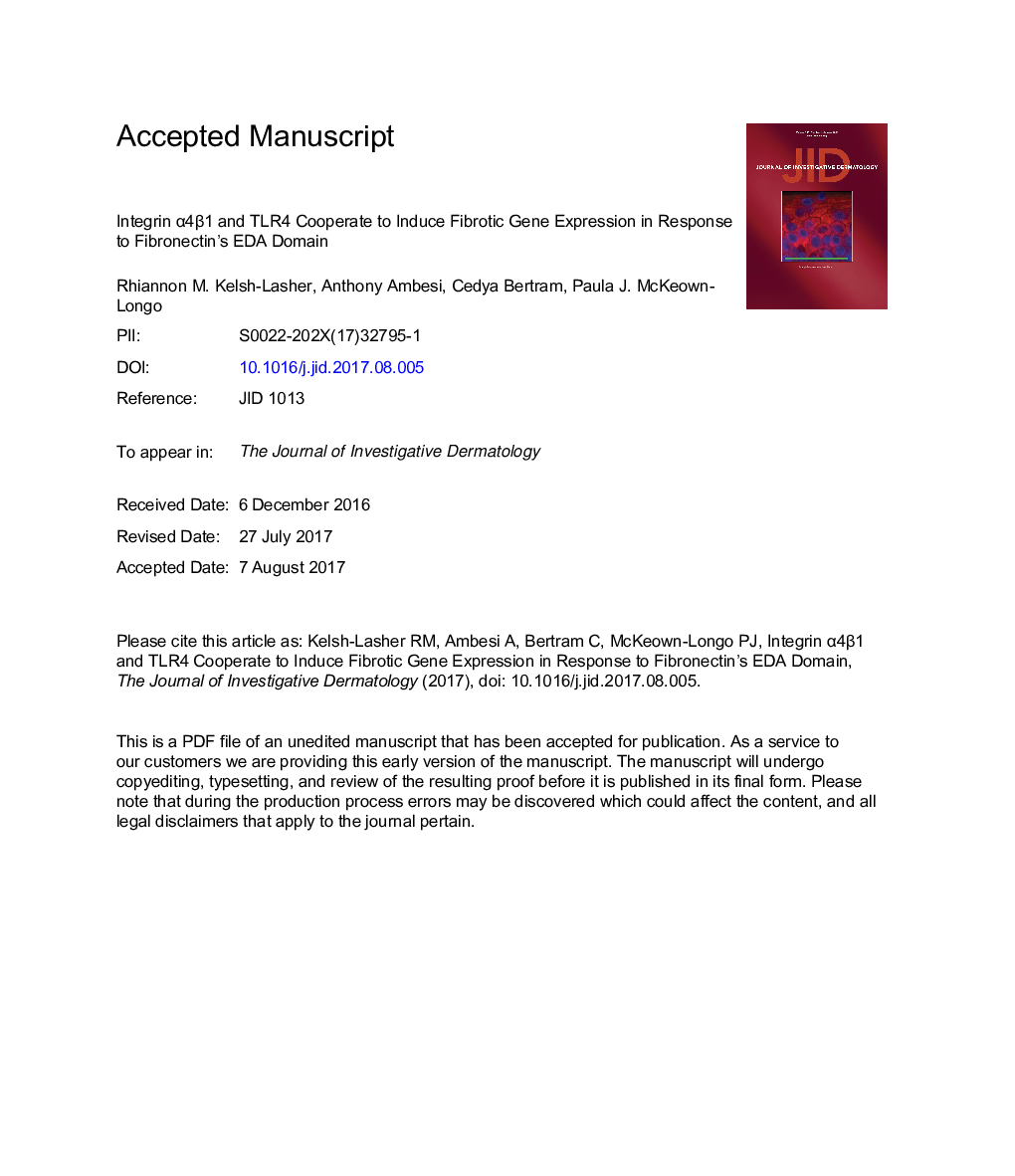| کد مقاله | کد نشریه | سال انتشار | مقاله انگلیسی | نسخه تمام متن |
|---|---|---|---|---|
| 8716252 | 1587881 | 2017 | 28 صفحه PDF | دانلود رایگان |
عنوان انگلیسی مقاله ISI
Integrin α4β1 and TLR4 Cooperate to Induce Fibrotic Gene Expression in Response to Fibronectin's EDA Domain
دانلود مقاله + سفارش ترجمه
دانلود مقاله ISI انگلیسی
رایگان برای ایرانیان
کلمات کلیدی
TNFDAMPFAKRT-PCRTGFECMTLR4PFNSmall interfering RNA - RNA تداخل کوچکreverse transcriptase-PCR - RT-PCR معکوسsiRNA - siRNAdamage-associated molecular pattern - الگوی مولکولی مرتبط با آسیبtransforming growth factor - تبدیل فاکتور رشدtumor necrosis factor - فاکتور نکروز تومورPlasma fibronectin - فیبرنکتین پلاسماExtracellular matrix - ماتریکس خارج سلولیfocal adhesion kinase - کیناز چسبندگی کانونیToll-like receptor 4 - گیرنده تله مانند 4
موضوعات مرتبط
علوم پزشکی و سلامت
پزشکی و دندانپزشکی
امراض پوستی
پیش نمایش صفحه اول مقاله

چکیده انگلیسی
Alternative splicing of fibronectin increases expression of the EDA+ isoform of fibronectin (EDA+Fn), a damage-associated molecular pattern molecule, which promotes fibro-inflammatory disease through the activation of toll-like receptors. Our studies indicate that the fibronectin EDA domain drives two waves of gene expression in human dermal fibroblasts. The first wave, seen at 2 hours, consisted of inflammatory genes, VCAM1, and tumor necrosis factor. The second wave, evaluated at 24 hours, was composed of the fibrosis-associated cytokines IL-10 and IL-13 and extracellular matrix genes fibronectin and osteopontin. Gene expression was coordinately regulated by the α4β1 integrin and the innate immune receptor toll-like receptor 4. Additionally, we found a significant toll-like receptor 4/α4β1-dependent enrichment in the ratio of EDA+Fn to total fibronectin in response to EDA, consistent with EDA+Fn initiating further production of EDA+Fn. Our data also suggest that the EDA/α4β1 integrin interaction primes the cell for an enhanced response to toll-like receptor 4 ligands. Our studies provide evidence that remodeling of the fibronectin matrix in injured or diseased tissue elicits an EDA-dependent fibro-inflammatory response in dermal fibroblasts. The data suggest a paradigm of damage-associated molecular pattern-based signaling whereby damage-associated molecular pattern binding integrins cooperate with innate immune receptors to stimulate inflammation and fibrosis.
ناشر
Database: Elsevier - ScienceDirect (ساینس دایرکت)
Journal: Journal of Investigative Dermatology - Volume 137, Issue 12, December 2017, Pages 2505-2512
Journal: Journal of Investigative Dermatology - Volume 137, Issue 12, December 2017, Pages 2505-2512
نویسندگان
Rhiannon M. Kelsh-Lasher, Anthony Ambesi, Ceyda Bertram, Paula J. McKeown-Longo,